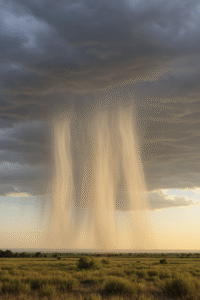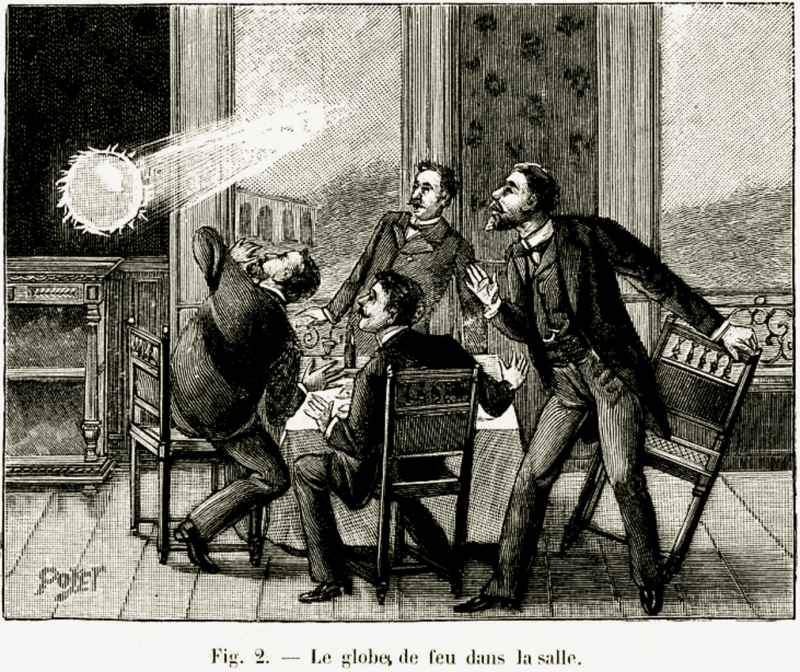Sponsor Any Post or Page on the Site. Just Contact Me to Discuss.
What is Ball Lightning?
Ball lightning is an atmospheric phenomenon that is characterized by the appearance of a luminous, spherical object that moves through the air.
The exact nature and cause of ball lightning is not well understood, and it is considered one of the least studied and most enigmatic meteorological phenomena. Some theories suggest that ball lightning is created by an electrical discharge in the atmosphere, while others propose that it is a plasma formation that is sustained by an unknown energy source.
Despite numerous reports of ball lightning sightings, the phenomenon remains poorly understood and is the subject of ongoing scientific investigation.
Can Ball Lightning kill you?
Ball lightning has been reported to cause injury and death in some cases, but the occurrence of such incidents is relatively rare.
Ball lightning is generally considered to be a relatively weak form of lightning, and it is thought that its ability to cause harm may depend on various factors such as its size, intensity, and proximity to people.
However, due to the unpredictable and poorly understood nature of ball lightning, it is difficult to predict when it might pose a danger to people. If you encounter ball lightning, it is recommended that you stay away from it and seek shelter in a secure location.
Is Ball Lightning similar to any other phenomenon?
Ball lightning has been compared to a number of other atmospheric phenomena, including St. Elmo’s fire, sprites, and blue jets.
These phenomena are related to ball lightning in that they are all associated with electrical discharges in the upper atmosphere, and they are often seen as luminous, transient events.
However, ball lightning is distinct from these other phenomena in several important ways, including its spherical shape, its longer duration, and its apparent ability to persist in the air even when it is not in contact with any electrical conductors.
Despite these similarities, ball lightning remains one of the most poorly understood meteorological phenomena, and more research is needed to fully understand its nature and behavior.
Latest Weather Phenomena Posts
- How Lightning Works – Too Fast for the Eye
 Sponsor Any Post or Page on the Site. Just Contact Me to Discuss. Lightning is one of those things that still feels like magic, even when we know the science …
Sponsor Any Post or Page on the Site. Just Contact Me to Discuss. Lightning is one of those things that still feels like magic, even when we know the science … - 20 obscure and lesser-known meteorological terms
 Sponsor Any Post or Page on the Site. Just Contact Me to Discuss. Here’s a fun collection of obscure and lesser-known meteorological terms. These are the ones that don’t usually …
Sponsor Any Post or Page on the Site. Just Contact Me to Discuss. Here’s a fun collection of obscure and lesser-known meteorological terms. These are the ones that don’t usually … - What is the dew point and why is it so significant?
 Sponsor Any Post or Page on the Site. Just Contact Me to Discuss. The dew point is one of those weather terms you hear thrown around a lot, especially in …
Sponsor Any Post or Page on the Site. Just Contact Me to Discuss. The dew point is one of those weather terms you hear thrown around a lot, especially in … - Aurora Display 10th May 2024
 Sponsor Any Post or Page on the Site. Just Contact Me to Discuss. A very special night for Northern Lights watchers. In 2016 we went all the way to Iceland …
Sponsor Any Post or Page on the Site. Just Contact Me to Discuss. A very special night for Northern Lights watchers. In 2016 we went all the way to Iceland … - What is Ball Lightning?
 Sponsor Any Post or Page on the Site. Just Contact Me to Discuss. What is Ball Lightning? Ball lightning is an atmospheric phenomenon that is characterized by the appearance of …
Sponsor Any Post or Page on the Site. Just Contact Me to Discuss. What is Ball Lightning? Ball lightning is an atmospheric phenomenon that is characterized by the appearance of … - 5 Weird Weather Phenomena that raise the eyebrows
 Sponsor Any Post or Page on the Site. Just Contact Me to Discuss. In this video we take a look at the science behind 5 of the weirdest weather phenomena. …
Sponsor Any Post or Page on the Site. Just Contact Me to Discuss. In this video we take a look at the science behind 5 of the weirdest weather phenomena. …